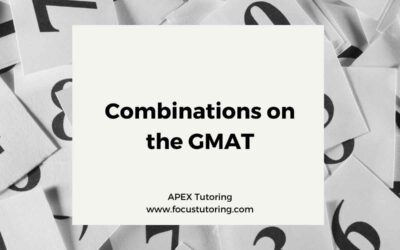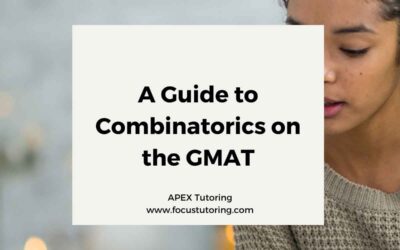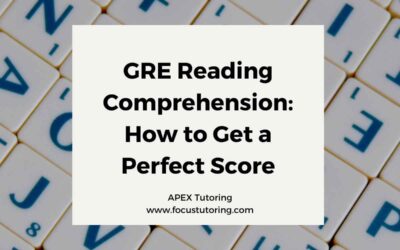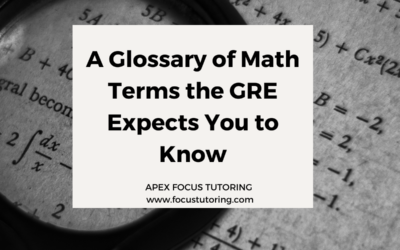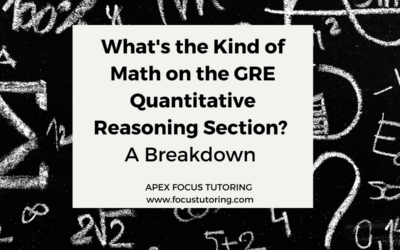Blog
Top Posts
No Results Found
The page you requested could not be found. Try refining your search, or use the navigation above to locate the post.
All Our Posts
Combinations on the GMAT
What are combinations? Conceptually, the combinations task is easy to understand: it’s about the number of ways to select a subgroup from a whole group. As in the permutations task, the whole group is notated as n, and the subgroup is notated as r. The standard...
GRE Analytical Writing: A Step-by-Step Guide
Before you begin your battery of Quantitative Reasoning and Verbal Reasoning sections on the GRE, you will have to complete the Analytical Writing measure. Read on to learn about this important section of the test and for useful preparation tips. What is the...
How to Solve Permutations Questions on the GMAT
Permutations are a type of combinatorics task that is often tested on the GMAT. In a permutations question, you are asked to find the number of ways to order a group of elements. The order of the elements matters in permutations questions, so the number of possible...
How to Build a Strong GRE Vocabulary That Will Last
By now you know that GRE preparation, for almost everyone, involves studying vocabulary words. Half of the questions on the GRE verbal reasoning sections are vocabulary-based. You will have to select from an answer choice set of vocabulary words to appropriately fill...
Ordering in Combinatorics: A Guide to Solving GMAT Questions
What is an Ordering Task? Ordering tasks are a common type of question on the GMAT. In an ordering task, you are asked to determine the number of ways to order a set of objects. The number of ways to order n different objects is n!, or n factorial. The best way to...
Text Completion and Sentence Equivalence on the GRE
Vocabulary-based questions on the GRE verbal reasoning sections are of two kinds: text completion and sentence equivalence. Both types are about filling in blanks in sentences with the right words based on context, but the answer choice formats are different. In this...
A Guide to Combinatorics on the GMAT
Every combinatorics question on the GMAT involves one or more of three fundamental combinatorics tasks: ordering, permutations, and combinations. This article will introduce the three tasks, and each of the three following articles will explain a task intuitively to...
GRE Reading Comprehension: How to Get a Perfect Score
Reading comprehension accounts for half of the questions on the GRE verbal reasoning sections. To do well on these questions, you need a framework for understanding the purpose and structure of the passages. Some passages are very short – really more accurately termed...
Create a Personalized GMAT Study Plan That Works for You
The Graduate Management Admission Test (GMAT) is a crucial step in the admissions process for many business schools worldwide. It assesses a candidate's abilities in various areas such as verbal reasoning, critical thinking, and quantitative reasoning. To excel in the...
Anatomy of GRE Verbal Reasoning Section
There are only three types of questions on a GRE verbal reasoning section: text completion, sentence equivalence, and reading comprehension. (Text completion and sentence equivalence are quite similar, as discussed in our last article.) Feel at home on the verbal...
Master the GMAT Data Insights Questions
Preparing for the GMAT exam requires a thorough understanding of the different question types, including the challenging Data Insights Questions. This article aims to provide you with techniques and strategies to excel in GMAT Focus Data Insights Section. By mastering...
A Glossary of Math Terms the GRE Expects You to Know
Have you begun studying for the GRE quantitative reasoning sections? Are you being held up by the recurring appearance of math terms whose definitions you don’t fully understand? We are here to help! Read through our glossary of math terms to know for GRE quantitative...
What’s the Kind of Math on the GRE Quantitative Reasoning Section? A Breakdown
Unless you’re a math major, chances are that when you start preparing for the GRE, it’s been a while since you took a math class. Your algebra skills, once sharp and shiny, are rusty. Formulas you once knew are getting mixed up and mixed around. Your times tables have...
Anatomy of GRE Quantitative Reasoning Section
Unlike GMAT quant, each GRE quantitative reasoning section is non-adaptive and can be navigated – you can visit and revisit any of the twenty questions for the duration of the thirty-five minute time limit. Each GRE quantitative section is also predictable in terms of...
GMAT Focus Edition and Current Edition 2023
The Graduate Management Admission Test (GMAT) is undergoing significant changes with the introduction of the GMAT Focus Edition 2023. The new GMAT is designed to meet the evolving needs of business schools and employers and emphasizes higher-order reasoning skills and...
GRE Structure, Scoring, and Strategy Tips
If you are at the beginning of your GRE prep journey, it’s important to understand the structure of the test and to be equipped with the right strategies for navigating each section. In this article, we’ll overview the delivery structure of the exam and provide...
GMAT Study Schedule: How to Manage Your Time?
Preparing for the Graduate Management Admission Test (GMAT) requires dedication, discipline, and effective time management. A well-planned GMAT study schedule is crucial for success as it helps you allocate sufficient time to cover all the necessary content, practice...
5 Secrets To Know Before Hiring A GMAT Tutor
Preparing for the GMAT exam can be quite challenging and demanding, especially if you have to allocate most of your time to current studies or work duties. However, hiring a well-trained and skilled tutor, who can provide professional mentorship, could be a...
What to Look For in a GMAT Tutor and What to Avoid?
Choosing a GMAT tutor is an essential step towards achieving success in this challenging test. While self-study can be challenging, having an experienced tutor by your side can provide valuable help and guidance during the preparation process. However, finding a good...
Preparing For The GMAT With AI vs With A Tutor
Understanding the Role of AI in GMAT Test Prep Preparing for the GMAT, or the Graduate Management Admission Test, is a crucial step for anyone who wants to pursue a graduate degree in business. The GMAT measures your analytical, writing, quantitative, verbal, and...
Comprehensive GMAT Preparation
Step 1 – Complimentary Consultation
Step 2 – Assessment & Written Report
Step 3 – Work with a top scoring Apex trained instructor on your personalized prep plan.
Step 4 – Success
View our client success stories and find out how we position our clients to achieve and why we are the best choice for your success.
Book a Meeting Today!
Schedule a complimentary consultation call with one of our Instructors for Success with Apex . Act now as others have already done.

